| Part of the Politics series |
| Politics |
|---|
|
|
 | |||||
| Systems of government | |||||
|---|---|---|---|---|---|
|
A directorial republic is a country ruled by a college of several people who jointly exercise the powers of a head of state and/or a head of government.
In political history, the term directory, in French directoire, is applied to high collegial institutions of state composed of members styled director. Early directorial systems were the Ambrosian Republic (1447-1450), the Bohemian Revolt (1618–1620), New England Confederation (1643–1686), partially in First Stadtholderless Period of Dutch Republic (1650–1672), Pennsylvania Constitution of 1776 and the Directory of 1795–1799 in France.[1] The French Directory was inspired by the Pennsylvania Constitution of 1776, which prominently featured a collegial 12-member Supreme Executive Council with the President in fact only primus inter pares (first among equals). Variants of this form of government, based on the French model, were also established in the European regions conquered by France during the French Revolutionary Wars. Directorial systems have a lower presidentialism metric value compared to presidential systems due to lower concentration of political power in the hands of one individual.[2] Military juntas differ from the directorial system by not being elected. Utilizing sortition to select multiple executives can lead to a directorial system.
Current directorial systems
 Bosnia and Herzegovina: Presidency of Bosnia and Herzegovina (Triumvirate)
Bosnia and Herzegovina: Presidency of Bosnia and Herzegovina (Triumvirate)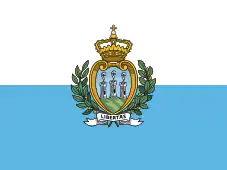 San Marino: Captains Regent (Diarchy)
San Marino: Captains Regent (Diarchy).svg.png.webp) Switzerland: Federal Council and equivalent executives of each canton
Switzerland: Federal Council and equivalent executives of each canton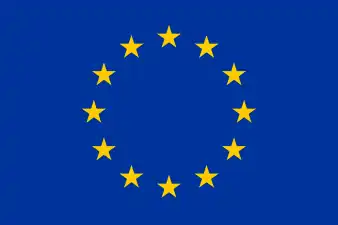 European Union: European Council and European Commission
European Union: European Council and European Commission
Directorial republic in Switzerland
One country now using this form of government is Switzerland[3] (and to a lesser extent, San Marino), where directories rule all levels of administration, federal, cantonal and municipal. On the face of it, the Swiss Federal Council might appear to be a typical parliamentary government; technically, however, it is not a meeting of ministers, but a college of heads of state. The current President of the Confederation is in fact only a primus inter pares (first among equals) with representative functions in particular for diplomacy with other States, without any power either of direction or of coordination of the activity of colleagues.[4] The Swiss Federal Council is elected by the Federal Assembly for four years, and is composed of seven members, among whom one is president and one is vice-president on a rotating basis, although these positions are symbolic in normal circumstances. The link between the Swiss managerial system and the presidential system is even more evident for the cantonal governments, where currently all directors are all individually directly elected by the voters.[5]
Former directorial systems
In the past, countries with elected directories include:
- Bohemian Revolt from 1618 to 1620
 New England Confederation from 1643 to 1686
New England Confederation from 1643 to 1686 Commonwealth of England from 1649 to 1653
Commonwealth of England from 1649 to 1653 Dutch Republic partially in First Stadtholderless Period from 1650 to 1672
Dutch Republic partially in First Stadtholderless Period from 1650 to 1672 Pennsylvania - Supreme Executive Council of the Commonwealth of Pennsylvania from 1777 to 1790
Pennsylvania - Supreme Executive Council of the Commonwealth of Pennsylvania from 1777 to 1790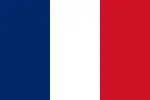 First French Republic - French Directory from 1795 to 1799
First French Republic - French Directory from 1795 to 1799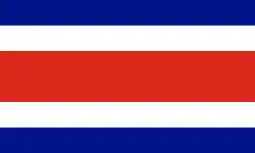 Costa Rica - The Town's Legates Junta and High Government Junta from 1821 to 1823
Costa Rica - The Town's Legates Junta and High Government Junta from 1821 to 1823.svg.png.webp) Roman Republic (1849) from 1849 to 1850 (Triumvirate)
Roman Republic (1849) from 1849 to 1850 (Triumvirate).svg.png.webp) Ukrainian People's Republic - Directorate of Ukraine from 1919 to 1920[6]
Ukrainian People's Republic - Directorate of Ukraine from 1919 to 1920[6]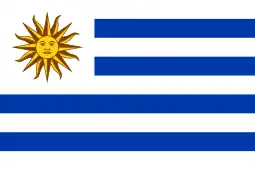 Uruguay - National Council of Administration and National Council of Government from 1952 to 1967
Uruguay - National Council of Administration and National Council of Government from 1952 to 1967
See also
References
- ↑ Directory (French history) at the Encyclopædia Britannica
- ↑ Sigman, Rachel; Lindberg, Staffan I. (November 1, 2017). "Neopatrimonialism and Democracy: An Empirical Investigation of Africa's Political Regimes". doi:10.2139/ssrn.3066654 – via Social Science Research Network.
- ↑ "Switzerland | History, Flag, Map, Capital, Population, & Facts". Encyclopedia Britannica.
- ↑ Pierre Cormon (2014). Swiss Politics for Complete Beginners. Ginevra: Slatkine.
- ↑ Buchs, Aurélia; Soguel, Nils (2022-04-01). "Fiscal performance and the re-election of finance ministers–evidence from the Swiss cantons". Public Choice. 191 (1): 31–49. doi:10.1007/s11127-021-00949-z. ISSN 1573-7101. S2CID 246371550.
- ↑ Directory (Ukrainian ruling body) at the Encyclopædia Britannica